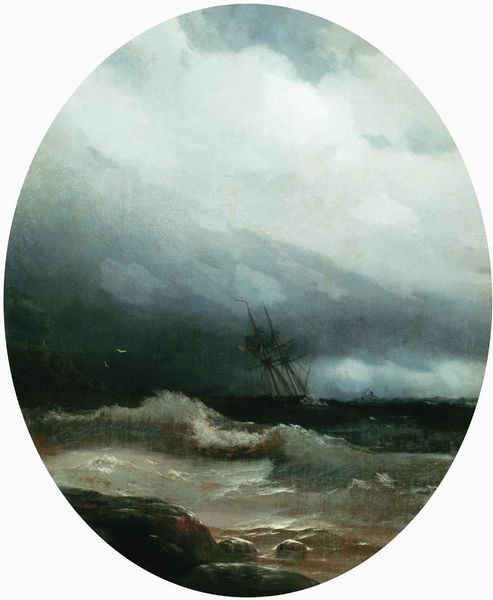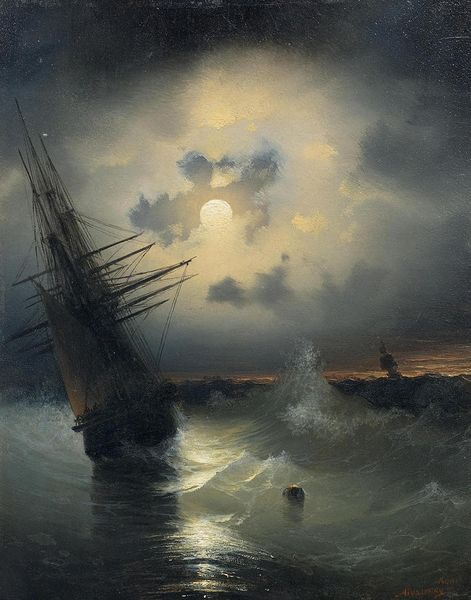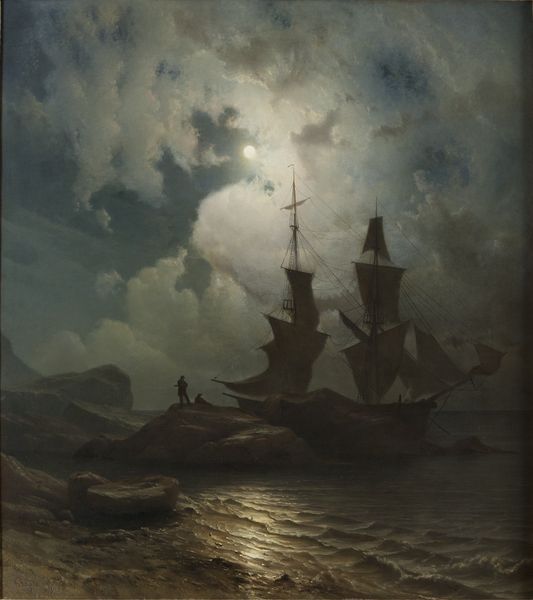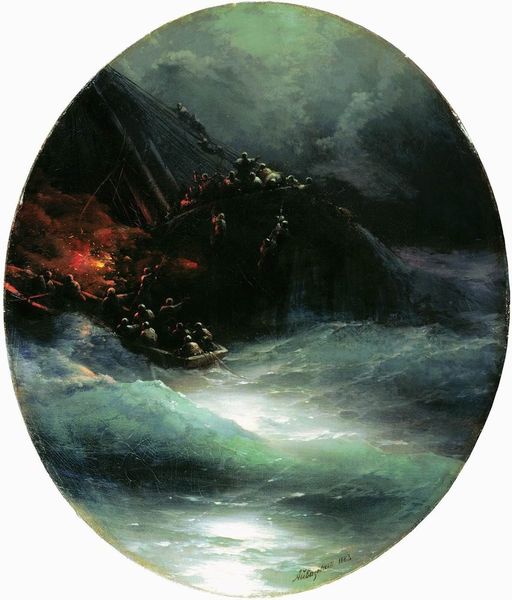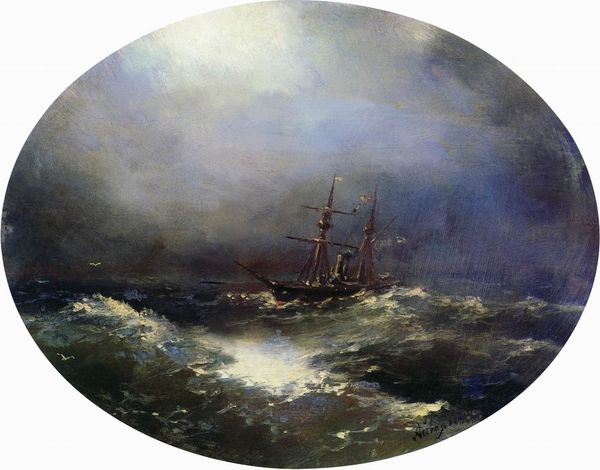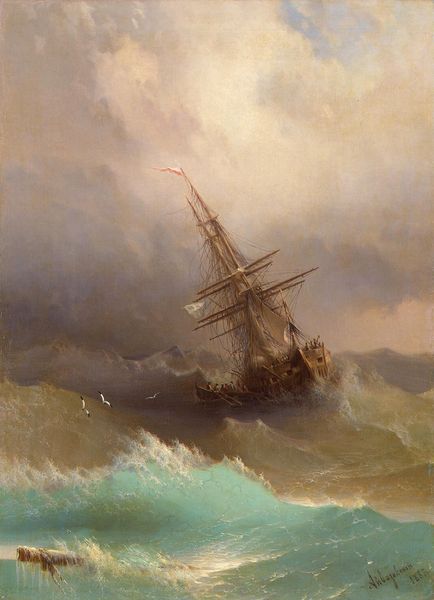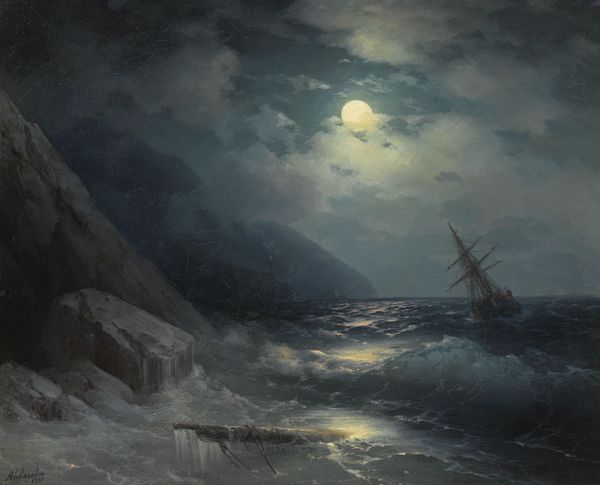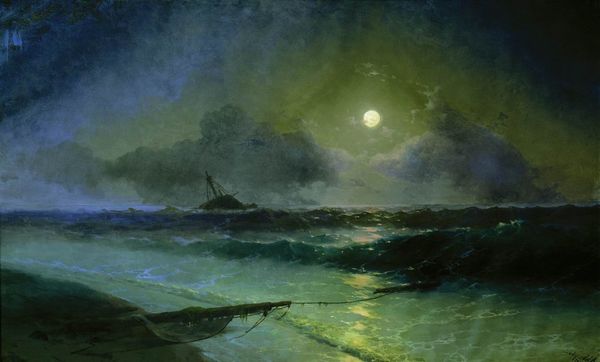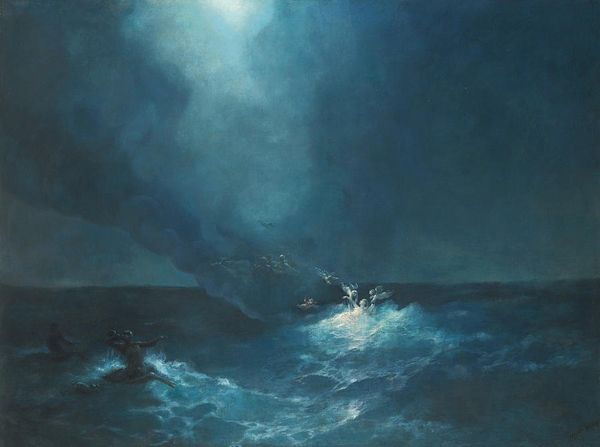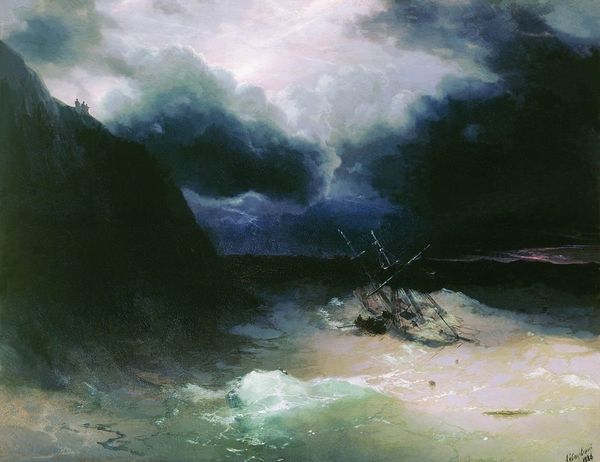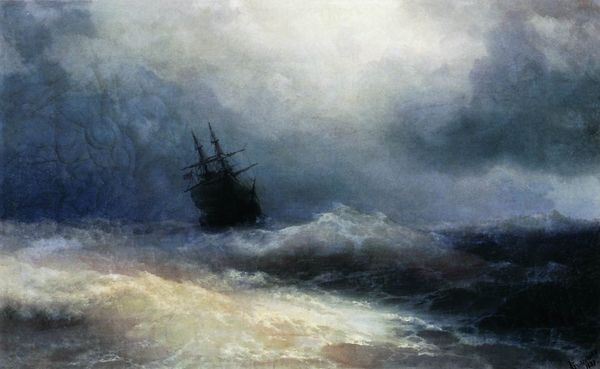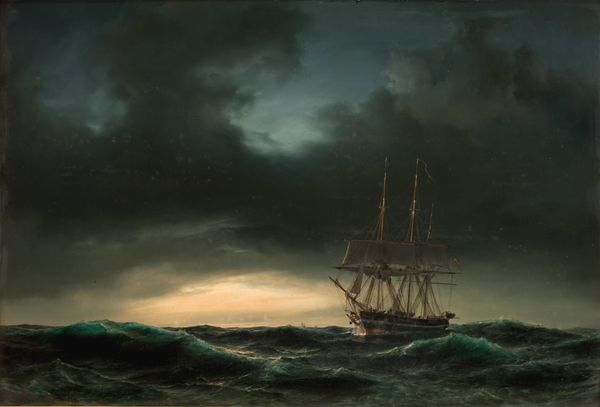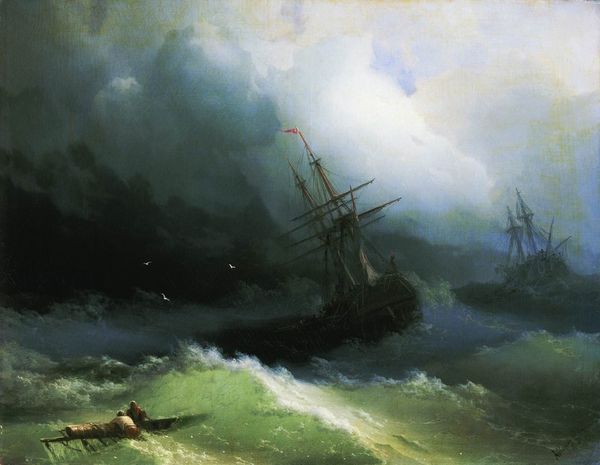
Copyright: Public domain
Editor: Here we have Ivan Aivazovsky's "Sea on a Moonlit Night," painted in 1858. The way he has rendered the churning water using oil paint is incredible. What catches your eye in this piece? Curator: It's fascinating to consider the socio-economic context. Oil paints became more readily available during this time, and Aivazovsky, as a court painter, would have had access to the finest materials. Think about the ship itself – who built it, what materials were used, who sailed it, and what goods it transported? These paintings often romanticize the lives of sailors while glossing over the harsh realities of maritime labor and colonial trade. Editor: That’s a very different lens than how I was looking at it. I was focused more on the emotional aspect and the sublime, maybe because it's considered Romanticism. Curator: Exactly, but even the idea of the "sublime" needs to be interrogated. Who gets to experience the sublime, and who is exploited in the process? Consider the impasto technique he employed to build up the waves; each brushstroke is a physical act, representing labor – his own, skilled labor, but also hinting at the unseen labor that made the materials and the depicted maritime activities possible. How does his technique glorify labor or exploit it, either his own or of people on the boats? Editor: So, by examining the materials and the social conditions surrounding the painting, we get a deeper understanding of the artist’s message, and also perhaps an alternative reading of Romanticism in general? Curator: Precisely! And understanding the cultural context from which both the artist and painting originated makes this artwork so much richer. Editor: That's given me a lot to think about. I’ll definitely look at art with a more critical eye going forward!
Comments
No comments
Be the first to comment and join the conversation on the ultimate creative platform.
